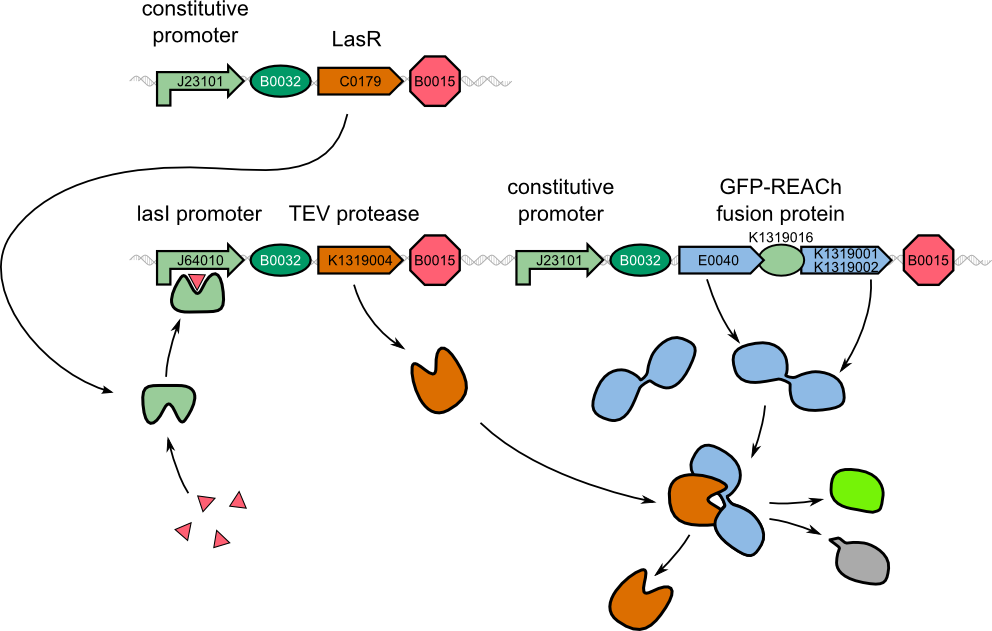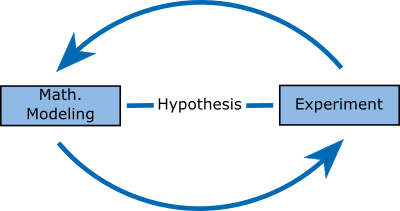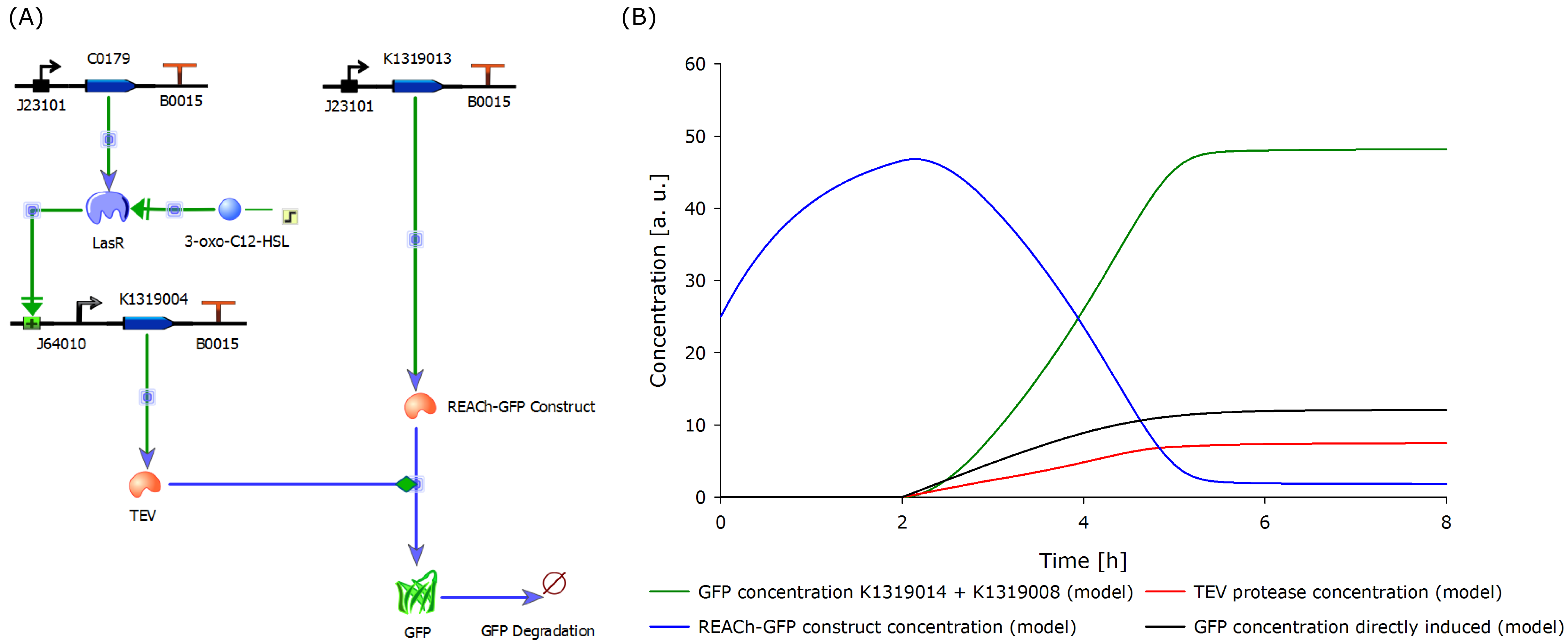Team:Aachen/Project/Model
From 2014.igem.org
(→Modeling) |
(→Modeling) |
||
| Line 10: | Line 10: | ||
<center> | <center> | ||
| - | {{Team:Aachen/FigureFloatRight|Aachen_Modeling_Flowchart.png|title=Modeling Flowchart|align=center|width= | + | {{Team:Aachen/FigureFloatRight|Aachen_Modeling_Flowchart.png|title=Modeling Flowchart|align=center|width=320px}} |
</center> | </center> | ||
| - | |||
For our two-dimensional biosensor, we thought of different methods to generate faster and stronger fluorescence responses from weak promotors. We were inspired by a recently published engineered ''dark quencher'', called REACh, that is able to extinguish the fluorescence of EGFP. In our system, we wanted a fusion protein of EGFP with the dark quencher to be cleaved by the very efficient TEV protease that would then be introduced behind the weak quorum sensing promotor. | For our two-dimensional biosensor, we thought of different methods to generate faster and stronger fluorescence responses from weak promotors. We were inspired by a recently published engineered ''dark quencher'', called REACh, that is able to extinguish the fluorescence of EGFP. In our system, we wanted a fusion protein of EGFP with the dark quencher to be cleaved by the very efficient TEV protease that would then be introduced behind the weak quorum sensing promotor. | ||
To determine if this idea was actually feasible, we decided to model the system using the CAD tool TinkerCell (Chandran, Bergmann and Sauro, 2009). | To determine if this idea was actually feasible, we decided to model the system using the CAD tool TinkerCell (Chandran, Bergmann and Sauro, 2009). | ||
| - | |||
| - | |||
| - | |||
| - | |||
| - | |||
| - | |||
Revision as of 22:45, 17 October 2014
|
|
 "
"



